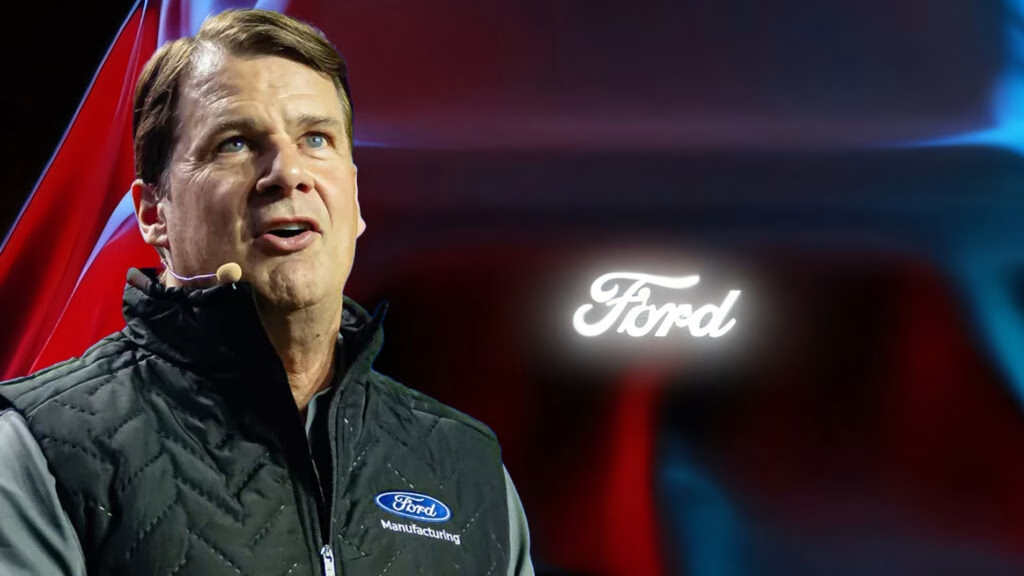What Will Ford’s New EV Strategy Actually Change for Drivers and Investors?
Ford’s upcoming August 11 announcement isn’t just another corporate update—it’s being billed as the company’s “Model T moment” for electric vehicles. That’s a bold claim, especially from CEO Jim Farley, who’s known for his candor and willingness to shake things up. But what does this mean for the average driver or the savvy investor watching the EV space?
Farley has made it clear: profitability is the new North Star. Instead of chasing every EV niche, Ford’s going to zero in on segments where it can actually make money. This is a big shift from the “growth at all costs” mindset that’s dominated the electric car conversation for years. Investors should take note—Ford’s not just chasing volume, but sustainable returns.
Why Is Ford Looking to China for Inspiration Instead of Detroit?
Here’s where things get really interesting. Farley isn’t shy about his admiration for Chinese EV makers. He’s even been daily-driving a Xiaomi SU7, calling it “fantastic” and admitting he’s reluctant to give it up. That’s not just lip service. On a recent earnings call, Farley flat-out said that Ford’s real competition isn’t GM, Stellantis, or Volkswagen anymore—it’s Chinese companies like BYD and Geely.
Why? Because China’s EV makers are outpacing the rest of the world in both cost and innovation. According to the International Energy Agency, China accounted for nearly 60% of global EV sales in 2023, and their cars are often thousands of dollars cheaper than Western rivals. Farley’s takeaway: if Ford wants to survive, it needs to radically re-engineer how it designs, builds, and sources its EVs. No more business as usual.
How Is Ford Planning to Catch Up With Chinese EV Leaders?
Ford’s answer isn’t just to build cheaper cars—it’s to rethink the entire process. Farley talks about “radical re-engineering” of the engineering, supply chain, and manufacturing. That means looking for efficiencies everywhere, from battery sourcing to final assembly. It also means leaning into partnerships. As EV technology becomes more commoditized, it’s getting harder for any one brand to stand out on tech alone. Ford’s strategy is to team up where it makes sense, especially on complex systems like electrical architecture, and focus its resources where it can actually make a difference.
There’s a bit of humility here, too. Ford knows it’s behind, but it’s willing to learn from the best—even if the best are halfway around the world.
What’s the Real Impact of Tariffs on Ford’s EV Ambitions?
Tariffs are a thorny issue for Ford. The company is shelling out about $2 billion a year just in tariff-related costs, mostly from imported components. That’s a huge drag on profitability. But Farley sees a silver lining. Recent negotiations have brought some tariffs down from 25% to 15%, and he believes Ford’s status as a major American employer could help it secure more favorable treatment in the future.
There’s also a bigger trend at play: regionalization. As countries tighten their own electrification and emissions rules, and as tariff regimes shift, automakers are being forced to localize production and supply chains. Ford’s betting that by being nimble and leveraging its U.S. manufacturing footprint, it can turn these challenges into a competitive edge.
Are Partnerships the Secret Sauce for Ford’s EV Future?
With EV technology rapidly commoditizing, Ford is doubling down on strategic alliances. It’s a pragmatic move—no single automaker can do it all, especially as the pace of innovation accelerates. By partnering on things like battery tech, software, and supply chain logistics, Ford can share costs, speed up development, and avoid reinventing the wheel.
This approach is already paying off in the industry. For example, Ford’s collaboration with SK Innovation on battery plants in the U.S. is expected to create thousands of jobs and secure a steady supply of batteries for future models. It’s not just about cost-cutting; it’s about building resilience in a volatile global market.
What Does This Mean for the Future of Affordable EVs?
Farley’s “Model T moment” comment is more than just marketing. The original Model T revolutionized transportation by making cars affordable and accessible to the masses. Ford’s new EV strategy hints at a similar ambition: to bring down costs and make electric vehicles a realistic option for everyday drivers, not just early adopters or luxury buyers.
If Ford can pull this off—by streamlining manufacturing, leveraging partnerships, and out-innovating on cost—it could spark a new wave of EV adoption in North America and beyond. That’s not just good for Ford; it’s good for anyone hoping to see more affordable, practical electric cars on the road.
The big takeaway? Ford’s EV transformation isn’t about perfection—it’s about smarter adjustments. Start with one change this week, and you’ll likely spot the difference by month’s end.

